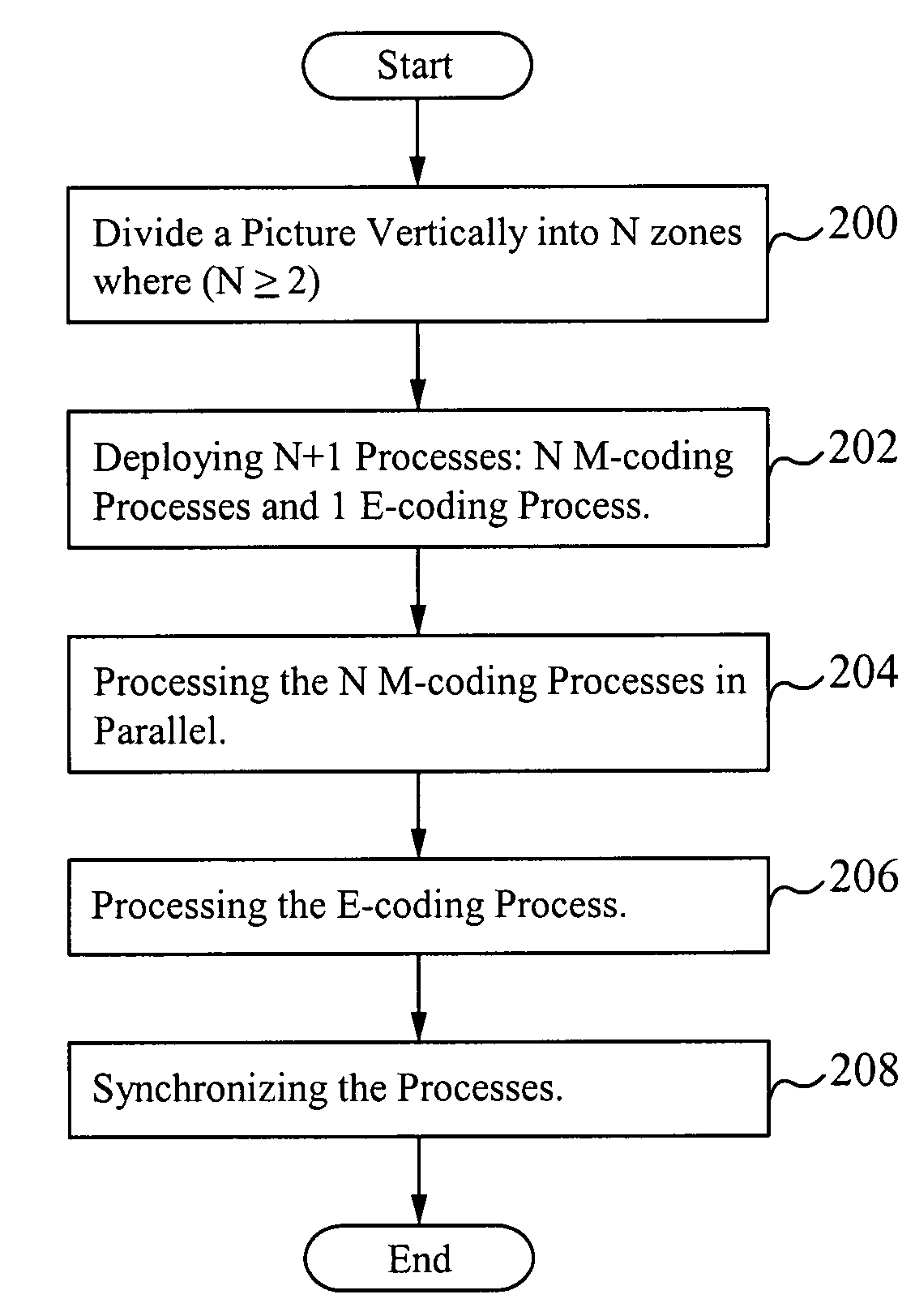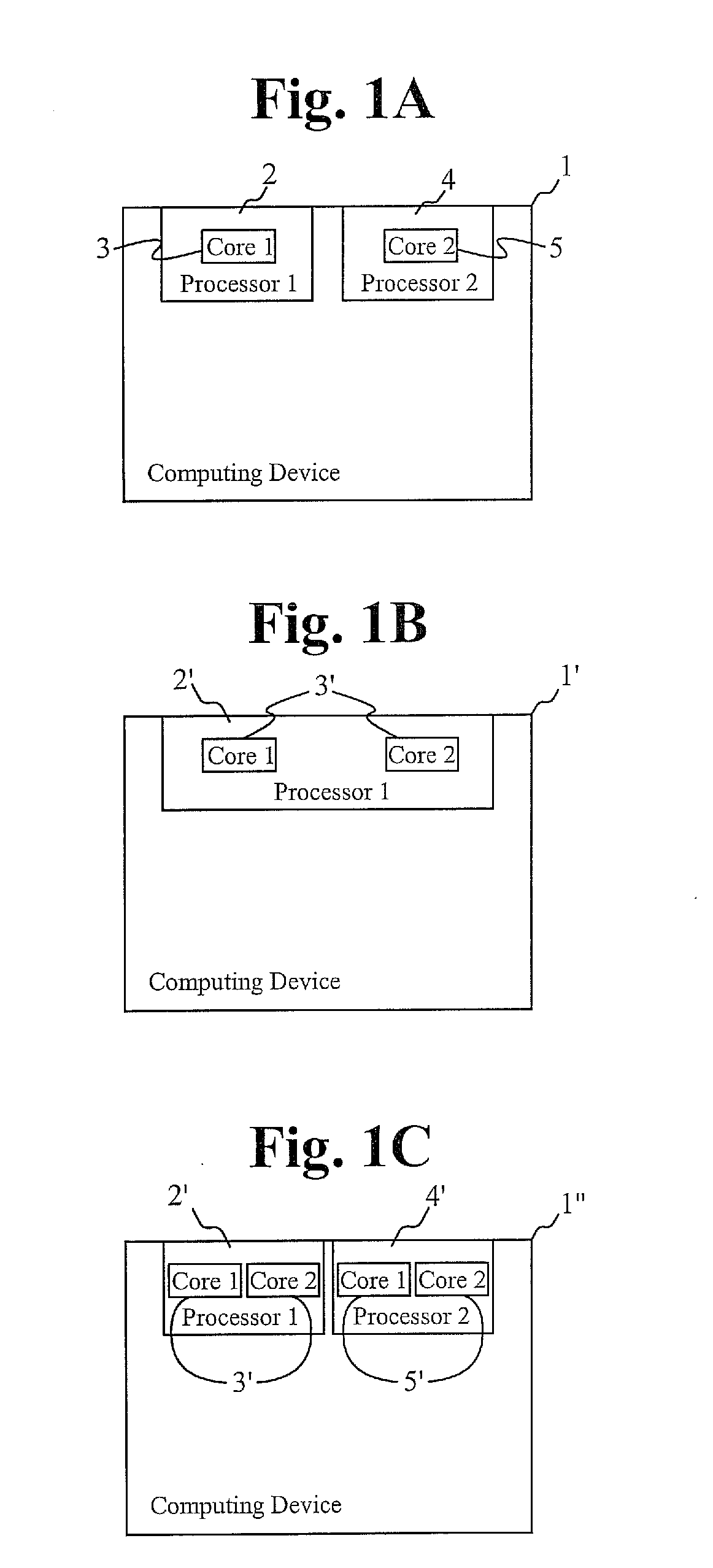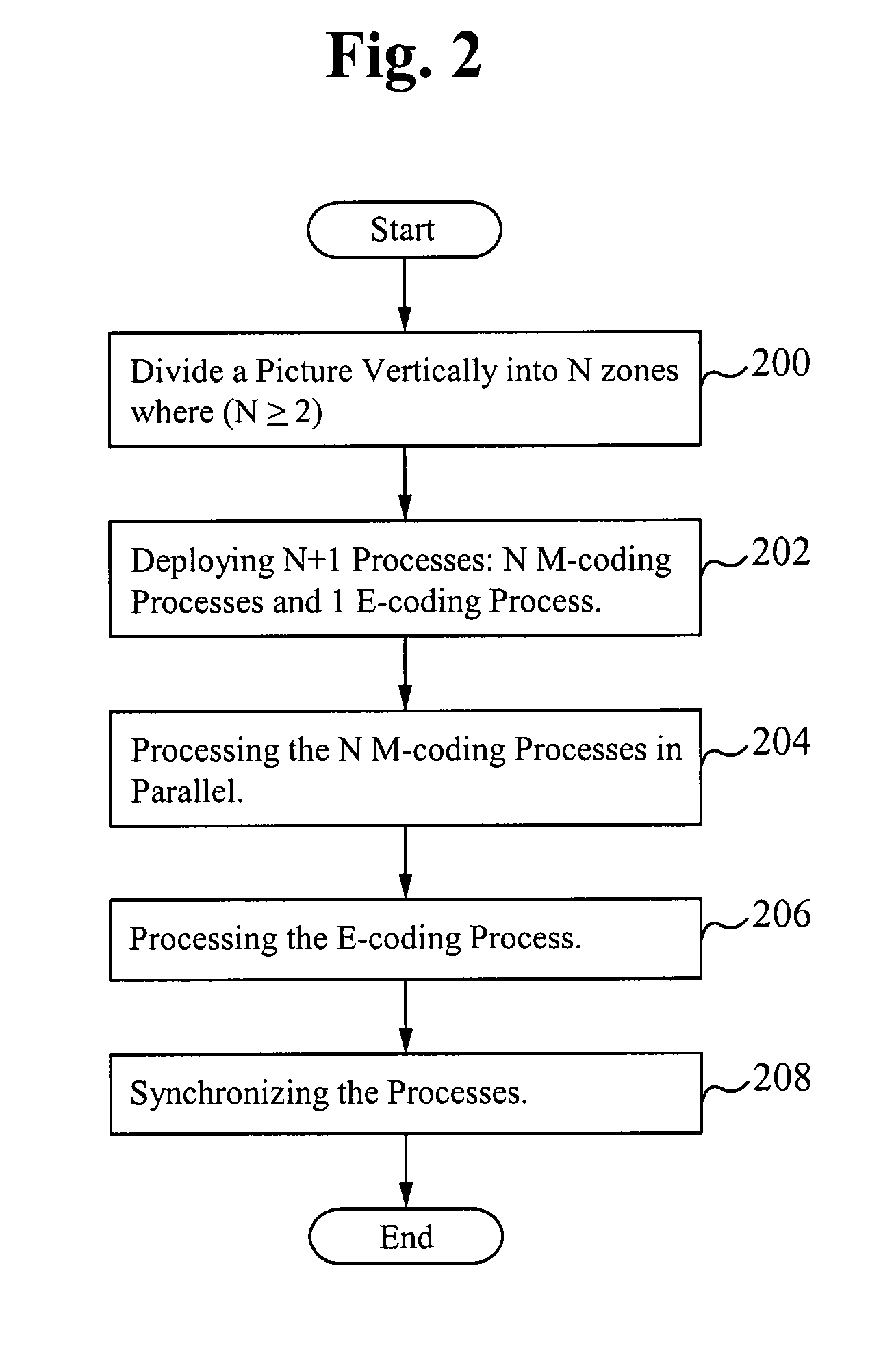Parallel processing apparatus for video compression
a video compression and parallel processing technology, applied in the field of video compression, can solve the problems of large increase in complexity, inability to implement design, and difficulty in encoding time, and achieve the effect of efficiently utilizing parallel processing computing power
- Summary
- Abstract
- Description
- Claims
- Application Information
AI Technical Summary
Benefits of technology
Problems solved by technology
Method used
Image
Examples
Embodiment Construction
[0030]A video sequence includes a sequence of pictures. Each picture is further divided into multiple macroblocks. The traditional encoding process encodes the macroblocks one by one in raster scan order. In general, the encoding process of each macroblock includes a macroblock type selection, motion estimation and compensation front stage, a transform and quantization middle stage and an entropy encoding end stage.
[0031]Vertical Split Parallelism (VSP) divides the traditional video compression process into two portions: M-coding and E-coding. M-coding stands for a general macroblock coding process without the entropy encoding process. E-coding stands for the entropy coding process. A picture is divided vertically, where each vertically divided partial picture represents a zone. Thus, a picture includes multiple zones. Each zone is processed by M-coding first. The output of M-coding of each zone in macroblock units is further processed by E-coding. A feature of VSP is to decouple th...
PUM
 Login to View More
Login to View More Abstract
Description
Claims
Application Information
 Login to View More
Login to View More - Generate Ideas
- Intellectual Property
- Life Sciences
- Materials
- Tech Scout
- Unparalleled Data Quality
- Higher Quality Content
- 60% Fewer Hallucinations
Browse by: Latest US Patents, China's latest patents, Technical Efficacy Thesaurus, Application Domain, Technology Topic, Popular Technical Reports.
© 2025 PatSnap. All rights reserved.Legal|Privacy policy|Modern Slavery Act Transparency Statement|Sitemap|About US| Contact US: help@patsnap.com



